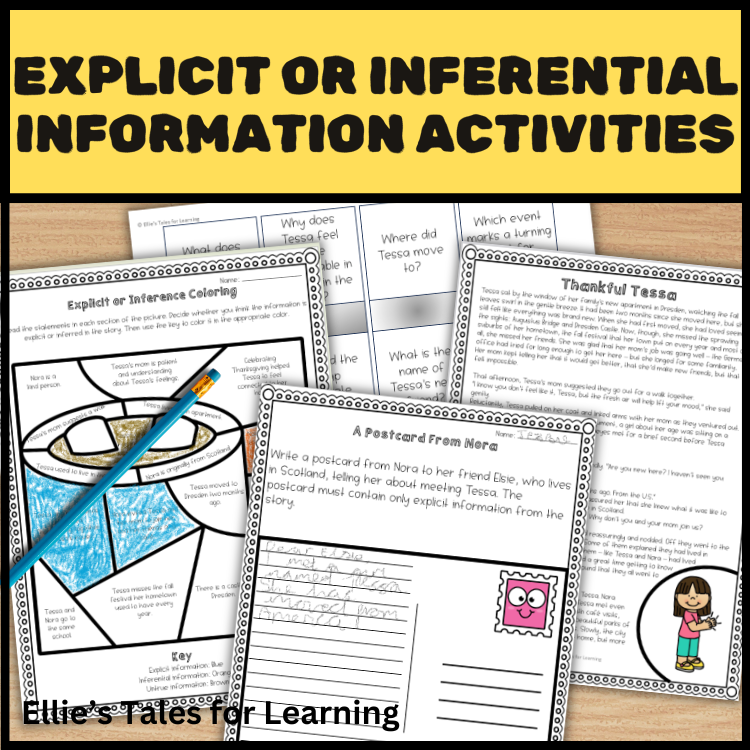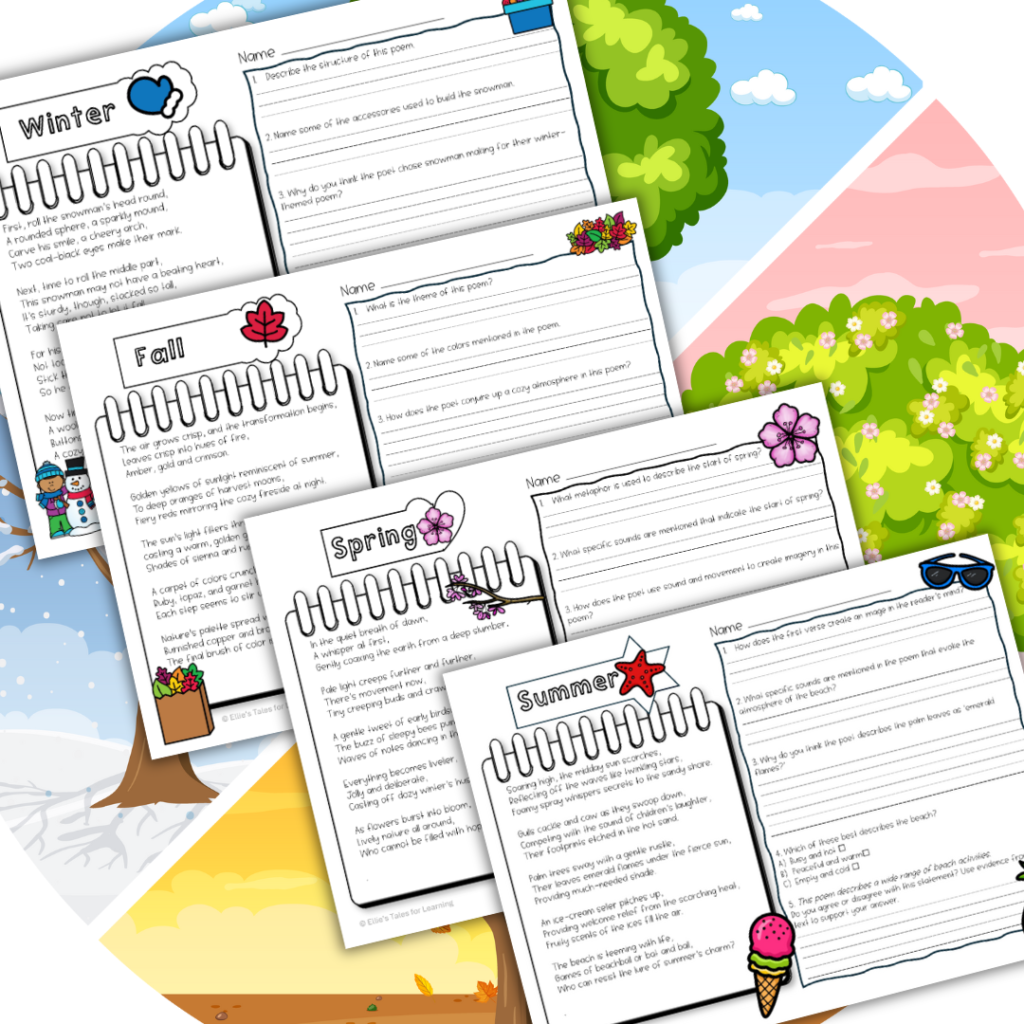If you teach reading, chances are you have been tasked with teaching students about the difference between inferential and explicit information. How can this be done in a fun and engaging way? Let’s delve in!
Explicit information
- Is given in actual words in the text
- Leaves no room for interpretation or misunderstanding
- Is often factual
- Can be taken from the text without any need to put it into your own words
Inferential information
- Is not given in actual words in the text
- Needs to be interpreted by the reader
- Is often opinion/feelings-related
- The reader needs to put the information into their own words
How to get started
When I first start teaching students about the difference between explicit and inferential information, I like to get rid of the text entirely (that is for another lesson!). I like to show students a picture, like the following one I found on Pixabay by Dandelion Tea:

With the students, I would list the explicit information I can glean from the image:
- A sandcastle has been made (we don’t know who made it)
- The children are sitting on sand
- There are three blue buckets in the image
- One child is holding a blue spade
I would then go on to list the inferential information that can be gleaned:
- The children are enjoying themselves
- It is hot
- The children have built a sandcastle
- They’ve used three buckets to make the sandcastle
Moving on to look at inference in reading comprehension
You can pick from most age-appropriate texts when teaching students about literal and inferential information in texts. Most will have examples of both types of information within them. Now, I’m not totally against seeing how students get on with comprehension questions at a relevant point (you could sign up for my freebie for some good ones), but I prefer to start with some fun activities for the students to engage them. If you read my previous blog – my introduction – you will know that I am motivated by fun. Teaching students about inference is no different.
Cut and stick inference activities
There are many ways you can do this. You could have a table with a whole load of statements from the passage, some literal and some inferential. You could then have a heap of labels for students to cut and stick saying ‘inferential information’ and ‘literal information’. Students stick the relevant one over each statement. Or (as I have done in the example below) you could have comprehension questions (either explicit or inferential) for students to stick the answers to match. Once they’ve done this answer the color the answer according to whether it required explicit or inferential information.
Color by code inference activities
I love color by code so any excuse and I’ll find a way to get one into my lessons! Here, the students simply use the key to color the information according to whether it is literal or inferential. The color by code template is by Partyhead Graphics.

Written inference activities
I find, once they’ve done a couple of quicker activities (like the one above), it’s great to really see how much the students have learned by asking them to apply their understanding. I like the postcard activity below for this:

Ready to get started?
There are many more ideas, but I do hope these have given you a good starting point. All the images from my resources come from my own explicit and inferential information resource, which can be purchased from my store. Just click on the image below to find it.


Pingback: Teaching children to quote accurately from the text - elliestalesforlearning.com